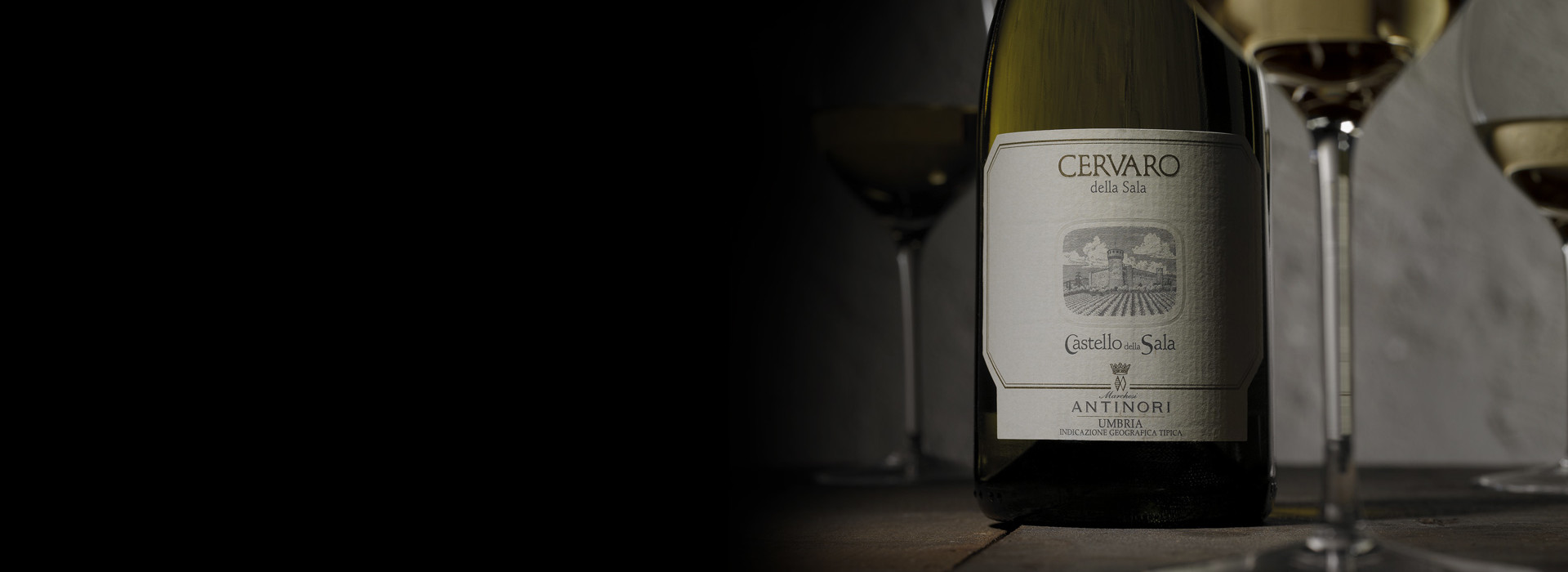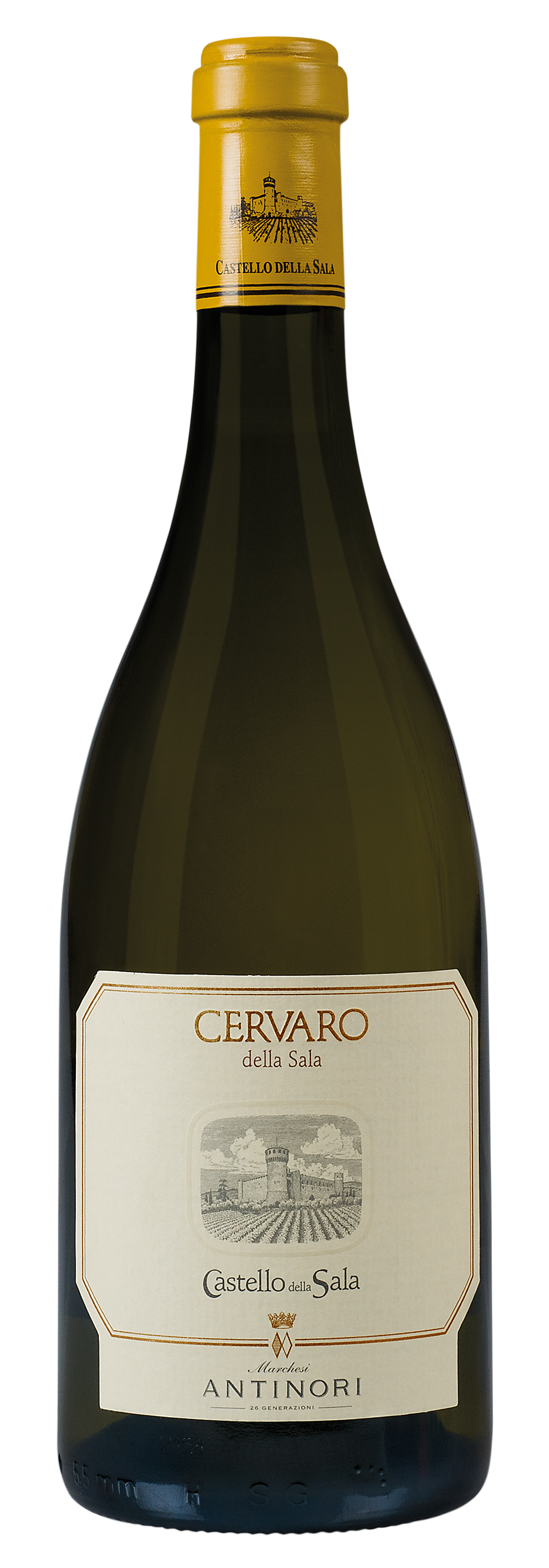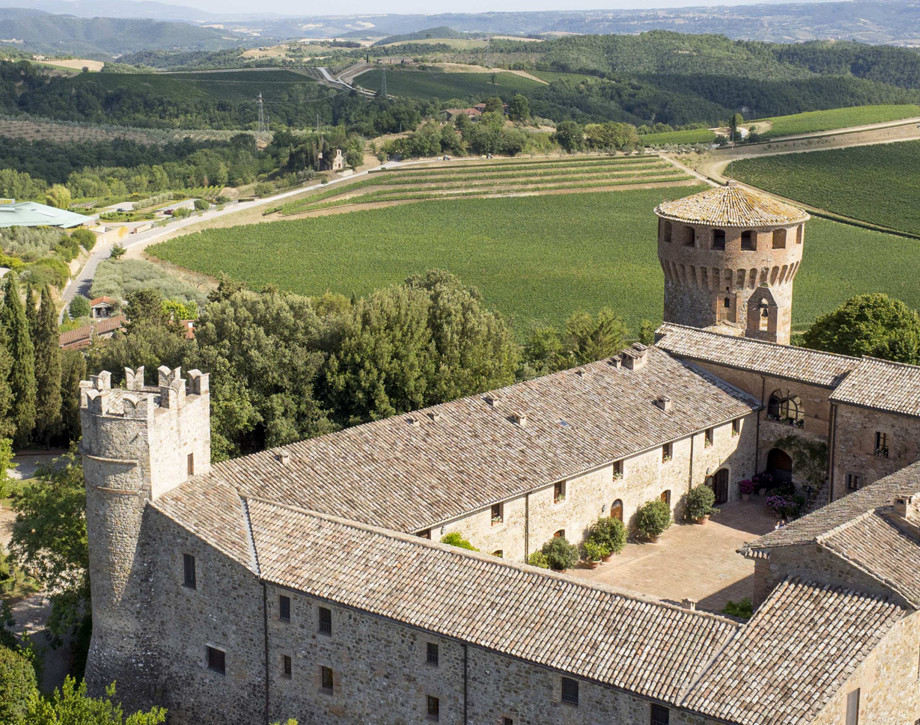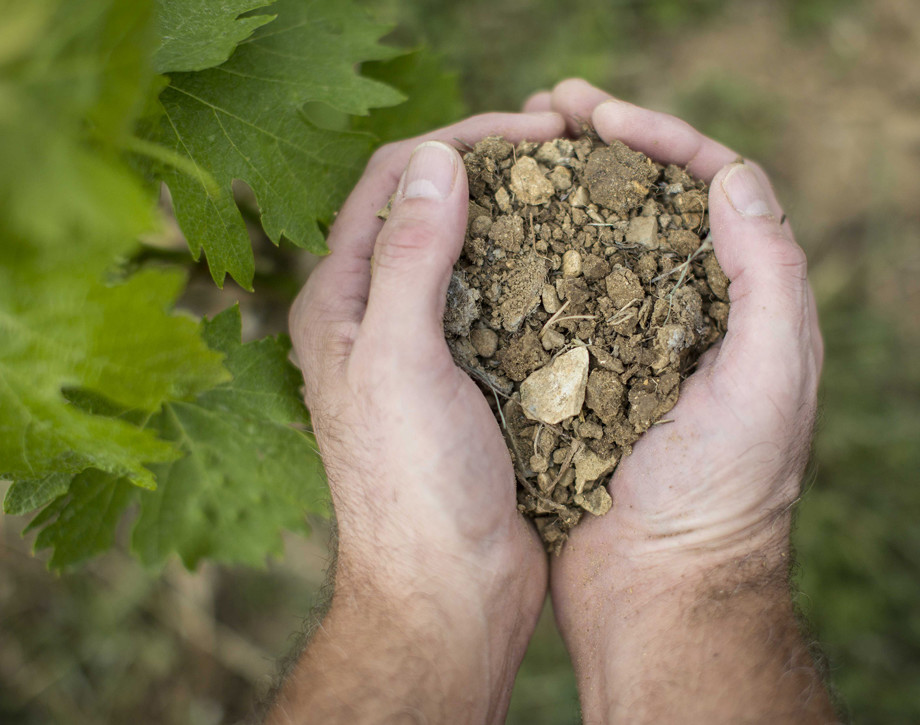Cervaro della Sala

The Wine
The name Cervaro comes from the noble family that owned Castello della Sala during the 14th century, Monaldeschi della Cervara. A blend of Chardonnay grapes and a small quantity of Grechetto make a wine that can age over time and represent the elegance and complexity of this unique estate. Cervaro della Sala is one of the first Italian white wines to have malolactic fermentation and aging take place in barriques. The first vintage of Cervaro to be produced was the 1985 vintage.
Historical Data
The name Cervaro comes from the noble family that owned Castello della Sala during the 14th century, Monaldeschi della Cervara. A blend of Chardonnay grapes and a small quantity of Grechetto make a wine that can age over time and represent the elegance and complexity of this unique estate. Cervaro della Sala is one of the first Italian wines to have malolactic fermentation and aging take place in barriques. The first vintage of Cervaro to be produced was the 1985 vintage.

The Wine
The name Cervaro comes from the noble family that owned Castello della Sala during the 14th century, Monaldeschi della Cervara. A blend of Chardonnay grapes and a small quantity of Grechetto make a wine that can age over time and represent the elegance and complexity of this unique estate. Cervaro della Sala is one of the first Italian white wines to have malolactic fermentation and aging take place in barriques. The first vintage of Cervaro to be produced was the 1985 vintage.

In Honor of the Monaldeschi della Cervara Family
The wine’s name honors the Monaldeschi della Cervara family who was the historic owner of Castello della Sala in the XVI century.
The Barrique
Cervaro della Sala was one of the first Italian white wines to have malolactic fermentation and aging take place in barriques.
The Concept
The idea behind Cervaro della Sala was to craft a white wine able to age over time.
The Enologist
In 1985, Renzo Cotarella, who was chief enologist at Castello della Sala at that time, made the first vintage of Cervaro della Sala.
Climate
The 2013 vintage, in general, was rather cool and marked by frequent precipitation, weather conditions which favored a positive growing season with a gradual and regular ripening of the grapes. The harvest period was ten to fifteen days later than the previous vintage, and picking began during the first ten days of September. After very mild weather in autumn of 2012, the winter of 2013 was characterized by slightly above average temperatures and rainfall. Spring and early summer rain left valuable reserves of ground water in the soil and slowed ripening. Seasonal warmth arrived in mid-July, and August was marked by temperature swings between daytime warmth and evening and nighttime coolness, creating conditions for a slow but constant ripening of the crop. Picking of the Chardonnay began in early September and was then followed by the picking of the Grechetto, a grape variety which, physiologically, reaches proper ripeness two weeks later. The grapes, when harvested, were healthy, ripe, and endowed with an excellent acidity.
Vinification
The harvesting of the grapes for Cervaro require particular care and attention to avoid damaging oxidative processes or extraction of undesirable tannins. Picking takes place during the early hours of the morning in order to bring to the cellars grapes which are entirely intact and undamaged in their fruit, unaffected by high daytime temperatures, The care and attention continue in the cellars thanks to their particular layout and structure, conceived and programmed to function entirely by gravity flow and, accordingly, to avoid mechanical influence and effect on the grapes and must. The must, after a four hour maceration on the grape skins at 50° Fahrenheit (10°centigrade), falls directly into decanting tanks to lose its impurities before going into barrel. The fermentation and the subsequent malolactic fermentation take place in oak, and it is precisely the completion of the malolactic fermentation which determines the amount of aging time in barrel of the wine. Five months are normally sufficient, and the wine then goes into stainless steel tanks, where it is blended with the Grechetto which has been fermented on its own. Cervaro della Sala, after bottling, is given an additional twelve months of bottle aging in the historic cellars of the Castello della Sala. before commercial release.
Historical Data
The name Cervaro comes from the noble family that owned Castello della Sala during the 14th century, Monaldeschi della Cervara. A blend of Chardonnay grapes and a small quantity of Grechetto make a wine that can age over time and represent the elegance and complexity of this unique estate. Cervaro della Sala is one of the first Italian wines to have malolactic fermentation and aging take place in barriques. The first vintage of Cervaro to be produced was the 1985 vintage.
Tasting Notes
Thanks to the cool growing season, the 2013 Cervaro della Sala is characterized by a notable vigor and crispness while nonetheless maintaining a Mediterranean character. Its nose shows notes of chamomile, honey, and flint. The palate is mineral in character with buttery vanilla notes which blend elegantly with flavors of tropical and citrus fruit.
Awards
Daniele Cernilli 96/100 Italy Gambero Rosso Tre Bicchieri Italy I vini di Veronelli Super Tre stelle Italy I vini dell'Espresso 16,5/20 Italy Falstaff 93/100 Austria James Suckling 94/100 USA
Scheda

Castello della Sala
Castello della Sala is located in the Umbria region, not far from the Tuscan border, about 18 kilometers from the historic city of Orvieto. The Medieval castle’s property extends over an area of 600 hectares (1482 acres), 229 hectares (495 acres) are planted with vineyards at an altitude that varies between 220 and 470 meters above sea level (722/1541 feet) on the gently rolling hillsides that characterize the beautiful countryside in this area. Castello della Sala is the perfect place for growing white varieties. The vines grow in clay and calcareous based soils, rich in fossil shells, and they are well exposed to the rising of the sun with an excellent difference of temperature between day and night. The one exception to the rule is Pinot Noir, the only red variety that has found in this area ideal growing conditions to best express its full potential.

Soil
Originating in the Pliocene period, rich in marine fossils with veins of clay.


















